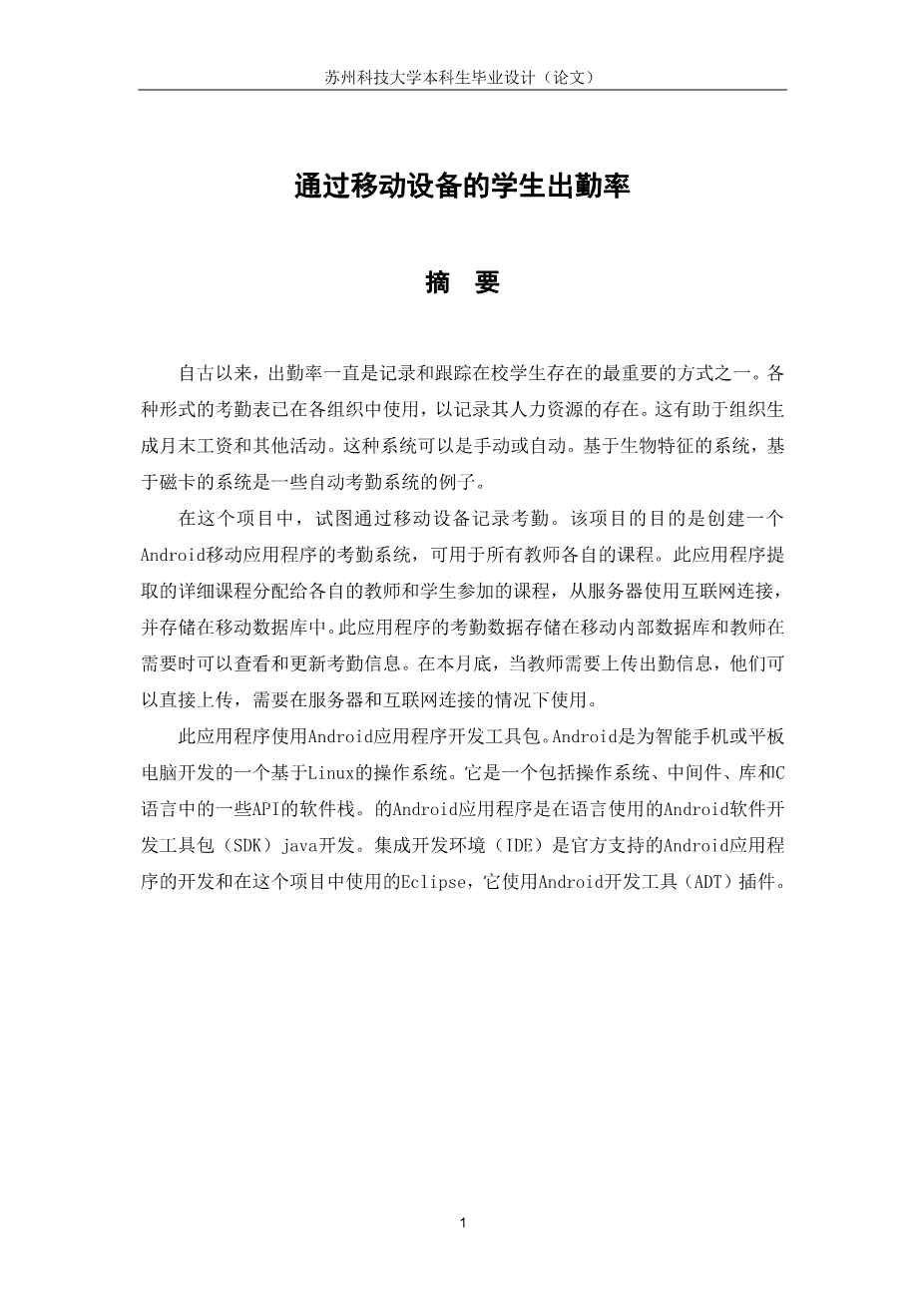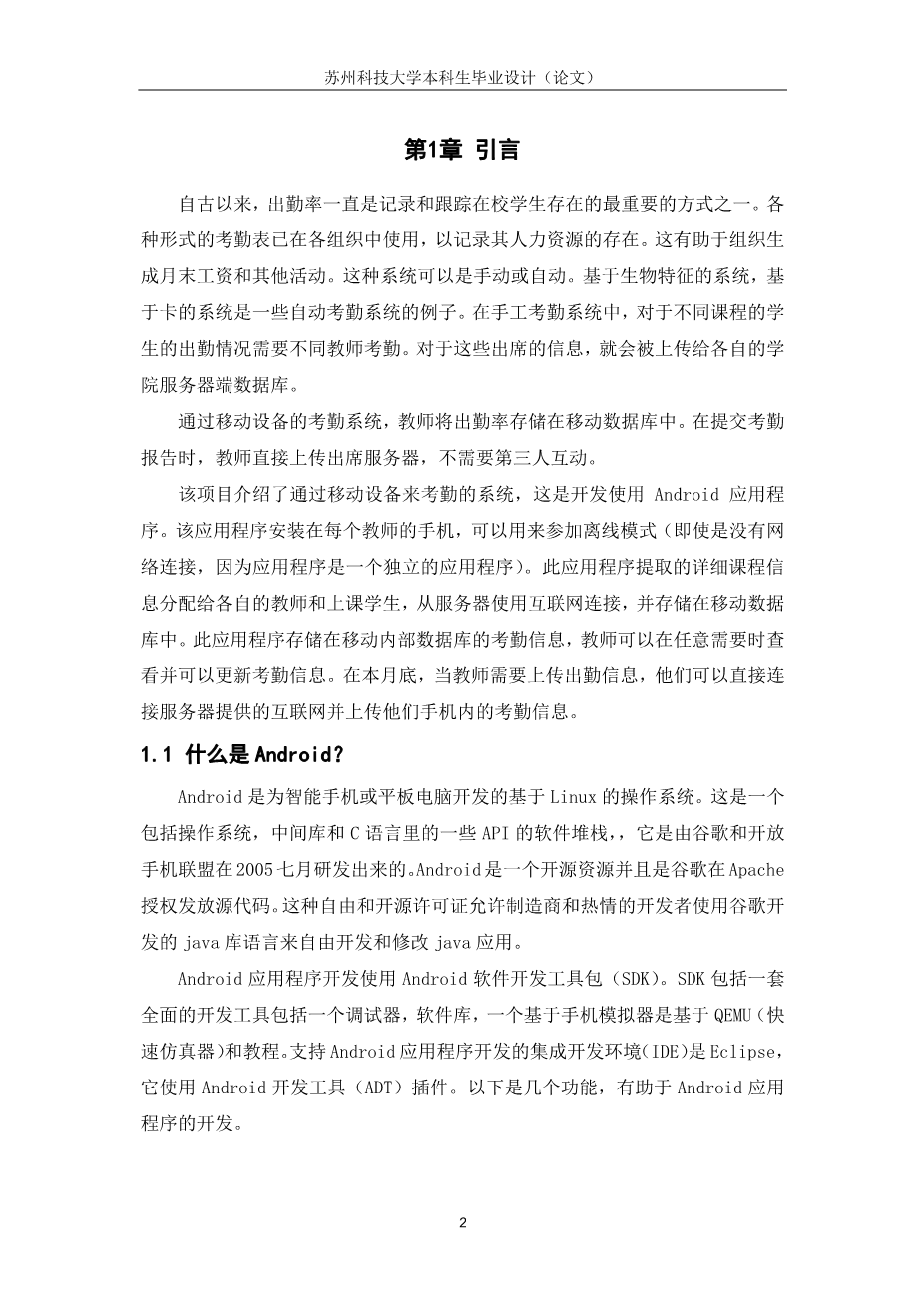Student Attendance Through Mobile Devices
Abstract
Since ages, marking attendance has been one of the most important way to record and track the presence of students in schools, colleges. Attendance marking in different forms has been in use in various organization to record the presence of their human resource. This helps the organization in generating their month-end payroll, and other activities. Such systems may be manual or automated. Biometric-based system,card-based system are some of the examples of automated attendance system.
In this project, an attempt has been made to record attendance through mobile devices. The aim of the project is to create an Android mobile application for attendance system that can be used by all teachers for their respective courses. This application fetches the details of the courses allotted to the respective faculty and the students enrolled in the courses from the server using the internet connection and stores it in the mobile database. This application stores the attendance in the mobile internal database and the faculty can view and update the attendance whenever required. At the end of the month, when the faculty is needed to upload the attendance, they can directly upload it from their mobile in the server provided the internet connection is available.
This application uses Android application development toolkit. Android is a Linux-based operating system developed for smart phones or tablet computers. It is a stack of software that includes operating system, middleware and libraries and APIs written in C. The Android application is developed in Java-like language using the Android software development kit (SDK). The integrated development environment (IDE) which is officially supported for Android apps development and used in this project is Eclipse, which uses the Android Development Tools (ADT) plugin.
1.Introduction
Since ages, marking attendance has been one of the most important way to record and track the presence of students in schools, colleges. Attendance marking in different forms has been in use in various organization to record the presence of their human resource. This helps the organization in generating their month-end payroll, and other activities. Such systems may be manual or automated. Biometric-based system,card-based system are some of the examples of automated attendance system. In the manual attendance system, the faculty takes the attendance of the students enrolled in different courses taken by the faculty. The information regarding the attendance is then passed on to the academic section of the institute where the information is feed into the institute server database.
In the attendance system through mobile devices, the faculty takes the attendance which is stored in the mobile database. At the time of submission of attendance report the faculty directly uploads the attendance in the server and does not need third person interaction.
This project presents the Attendance system through mobile devices, which is developed using Android application. The application is installed in every facultyrsquo;s mobile phones and can be used to take attendance in offline mode (that is even when there is no network connectivity as the application is a stand-alone application). This application fetches the details of the courses allotted to the respective faculty and the students enrolled in the courses from the server using the internet connection and stores it in the mobile database. This application stores the attendance in the mobile internal database and the faculty can view and update the attendance whenever required. At the end of the month, when the faculty is needed to upload the attendance, they can directly upload it from their mobile in the server provided the internet connection is available.
What is Android?
Android is a Linux-based operating system developed for smart phones or tablet computers. It is a stack of software that includes operating system, middleware and libraries and APIs written in C. It was developed by Google and Open Handset Alliance in July, 2005. Android is an open source and Google releases the source code under Apache license. This open source and free license allow the manufacturers and the enthusiastic developers to freely develop and modify their applications in Java-like language that utilizes Google-developed Java libraries.
The Android applications are developed using the Android software development kit (SDK). The SDK includes a comprehensive set of development tools which includes a debugger, software libraries, a handset based emulator which is based on QEMU (Quick EMUlator) and tutorials. The integrated development environment (IDE) which is officially supported for Android apps development is Eclipse which uses the Android Development Tools (ADT) plugin. The following are the several features which help in the development of Android applications:
Features of Android
Application Framework
Android application framework is supported by number of open source libraries like OpenSSL, SQLite, and Libc. The application framework is also supported by the Android core libraries. The framework is based on UNIX file system permissions which ensures security as the applications can have only those abilities that mobile phone owner give at the time of installation. The application framework enables the reuse and replacement of components.
Dalvik Virtual Machine (DVM)
Dalvik is a process virtual machine used in Googlersquo;s Android operating system. It is a low memory based virtual machine which is especially desi
剩余内容已隐藏,支付完成后下载完整资料


英语译文共 18 页,剩余内容已隐藏,支付完成后下载完整资料
资料编号:[484656],资料为PDF文档或Word文档,PDF文档可免费转换为Word
以上是毕业论文外文翻译,课题毕业论文、任务书、文献综述、开题报告、程序设计、图纸设计等资料可联系客服协助查找。


